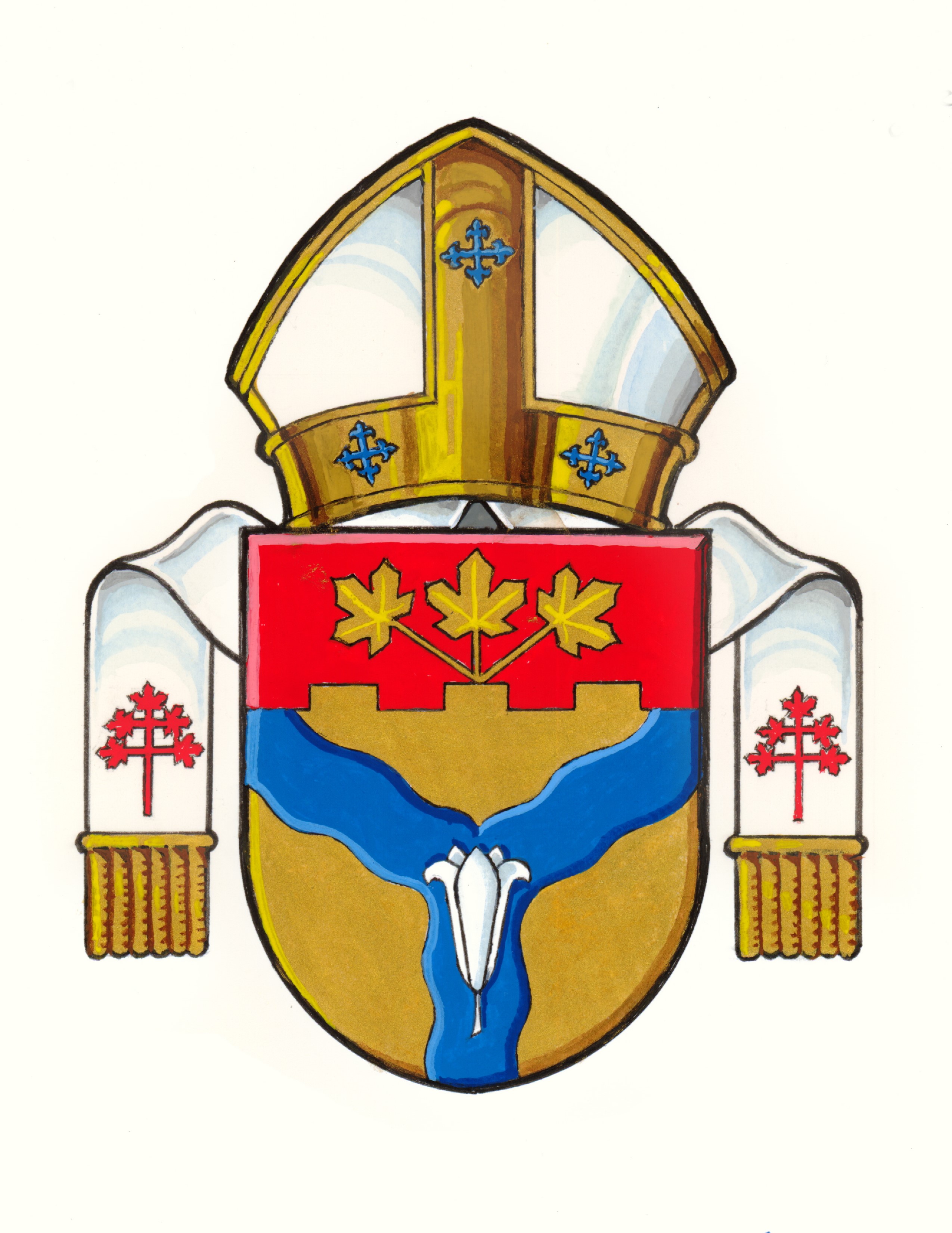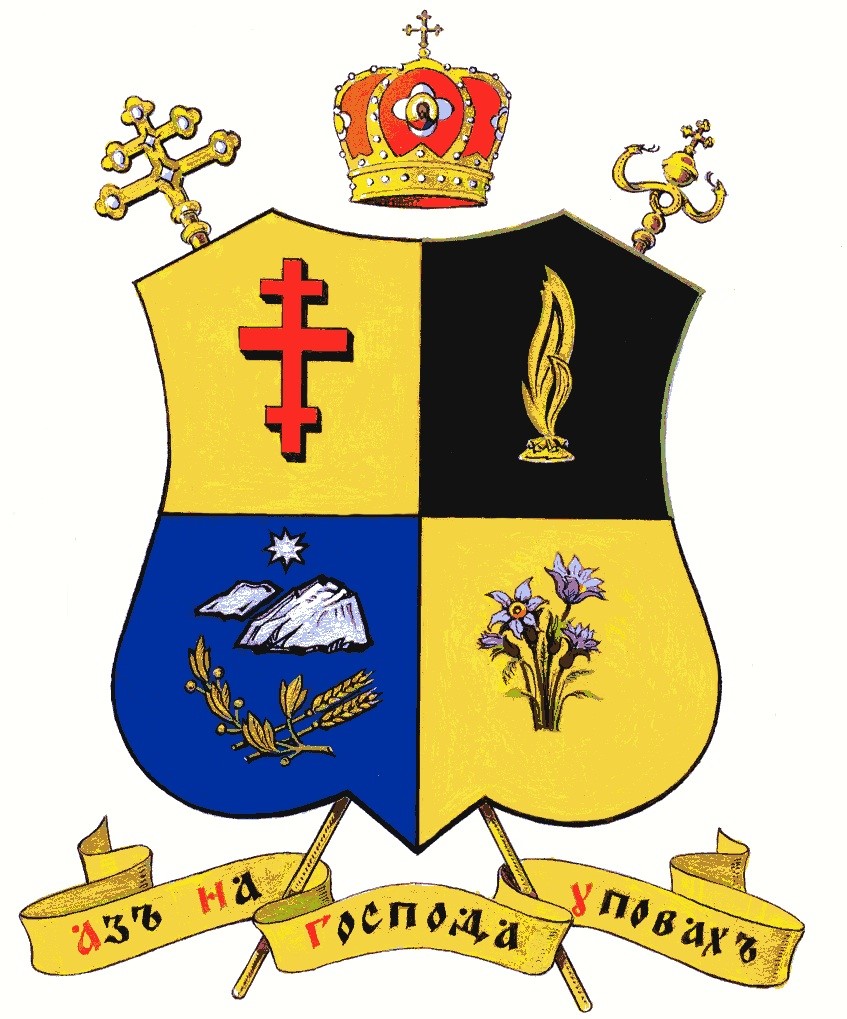Manitoba has been blessed through the works of Catholic Sisters for more than over 170 years. Since they first arrived in 1844, these courageous, pioneering women overcame numerous obstacles and sacrificed much to provide education, care for the sick, poor and disadvantaged, as well as do mission work and help communities and parishes.
To help acknowledge and celebrate the historical contributions and the incredible service the Catholic Sisters have made to the province of Manitoba, the Catholic Health Association of Manitoba in collaboration with the community at large has undertaken an initiative to celebrate this legacy.
LEGACY MONUMENT & INTEPRETIVE PANELS UNVEILED JUNE 20, 2016
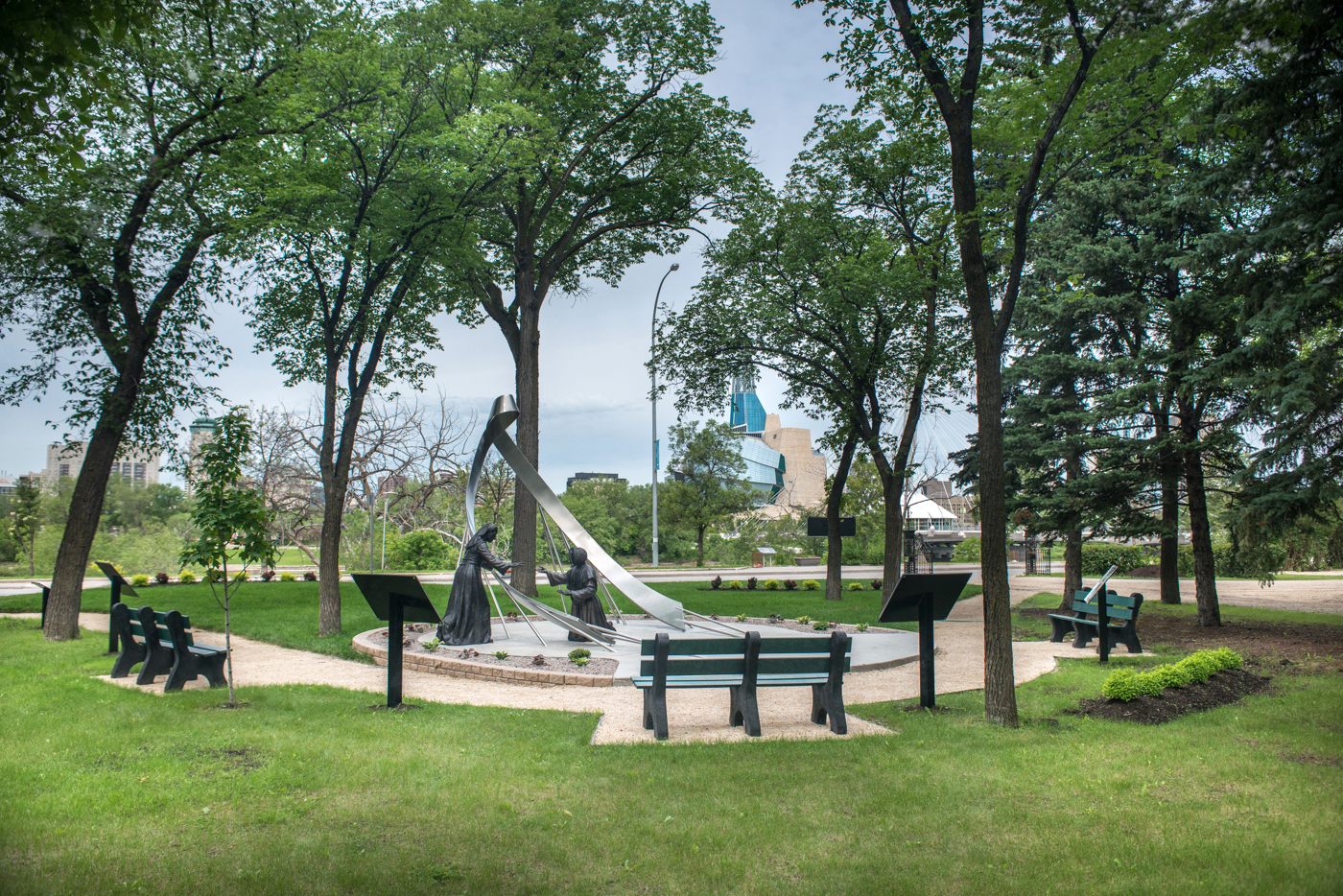 On the beautiful Monday morning of June 20th, 2016 250 persons gathered to take part in the official opening of the St. Boniface Heritage Garden and partake in the unveiling of the Legacy of Care, Courage and Compassion commemorative monument and interpretive panels. The event paid tribute to 51 Catholic Women Religious congregations who since 1844 have served, and of which 24 orders still serve in Manitoba.
On the beautiful Monday morning of June 20th, 2016 250 persons gathered to take part in the official opening of the St. Boniface Heritage Garden and partake in the unveiling of the Legacy of Care, Courage and Compassion commemorative monument and interpretive panels. The event paid tribute to 51 Catholic Women Religious congregations who since 1844 have served, and of which 24 orders still serve in Manitoba.
These pioneering women established Manitoba's health system and were major players in the province's social service and education systems. The Sisters monument and interpretive panels are a lasting legacy that shall inform and educate the general public on how they have always been there to respond to needs of the community, the unfortunate, sick and impoverished.
We invite you to visit the site located at the corner of Taché Avenue and de la Cathédrale in St. Boniface across the street from the St. Boniface Cathedral and its historic cemetery.
This beautiful legacy project was made possible thanks to the following major sponsors: Catholic Health Corporation of MB, Misericordia Hospital Corporation, KPMG, l'Université de Saint-Boniface, Sir Thomas Cropo Foundation, Winnipeg Foundation, the Dioceses of de St. Boniface, Winnipeg, Ukrainian Catholic Archeparchy, KPMG, and Francofonds Deniset-Bernier Fund.
If you wish to view the panels on this web site, click on Interpretive Panels located in the Commemorative Projects menu.
Artist Madeleine Vrignon et her husband
Garry Tessier prepare for monument unveiling.
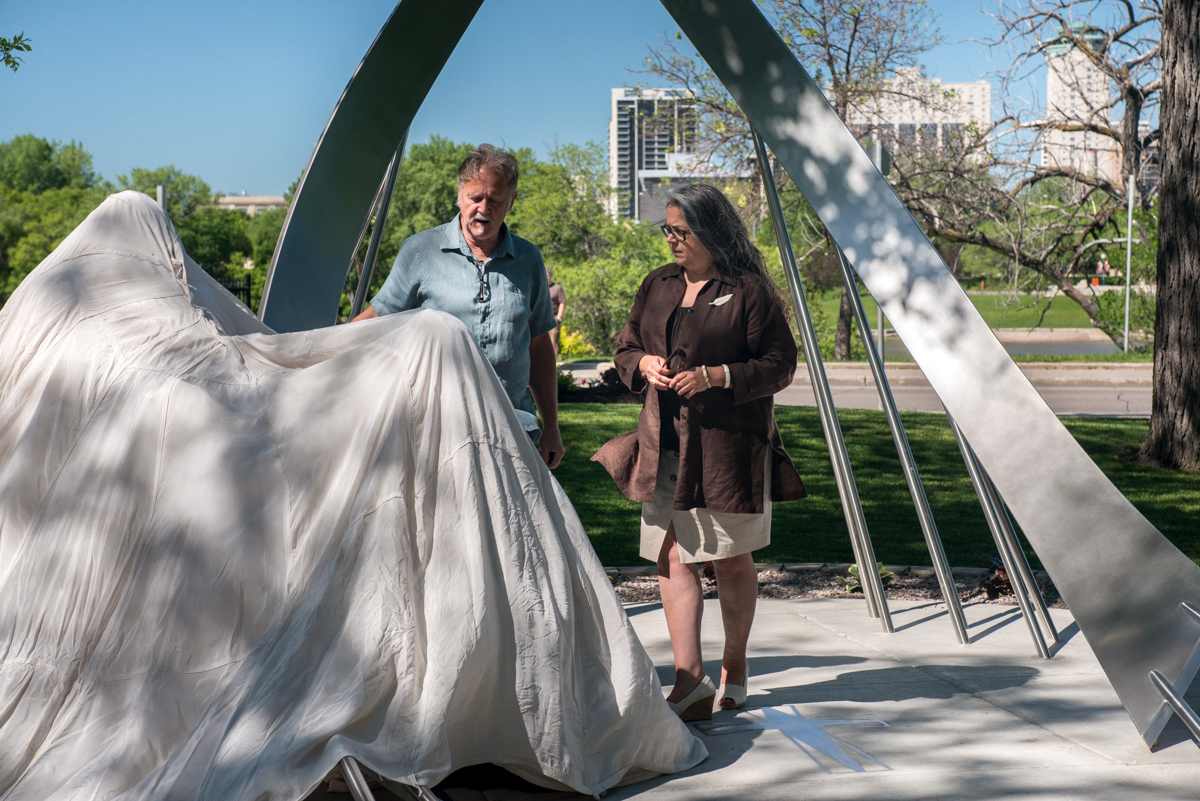
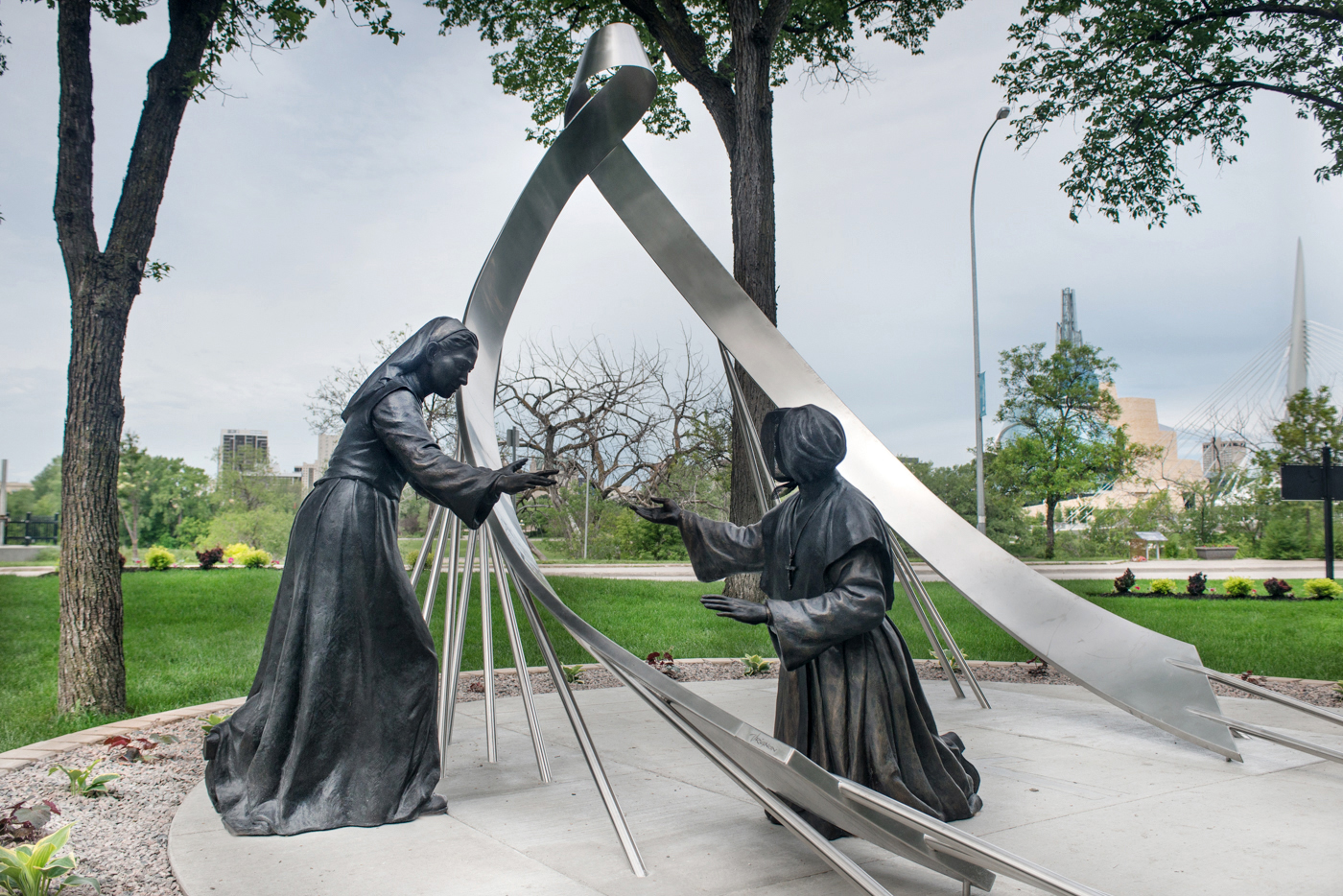
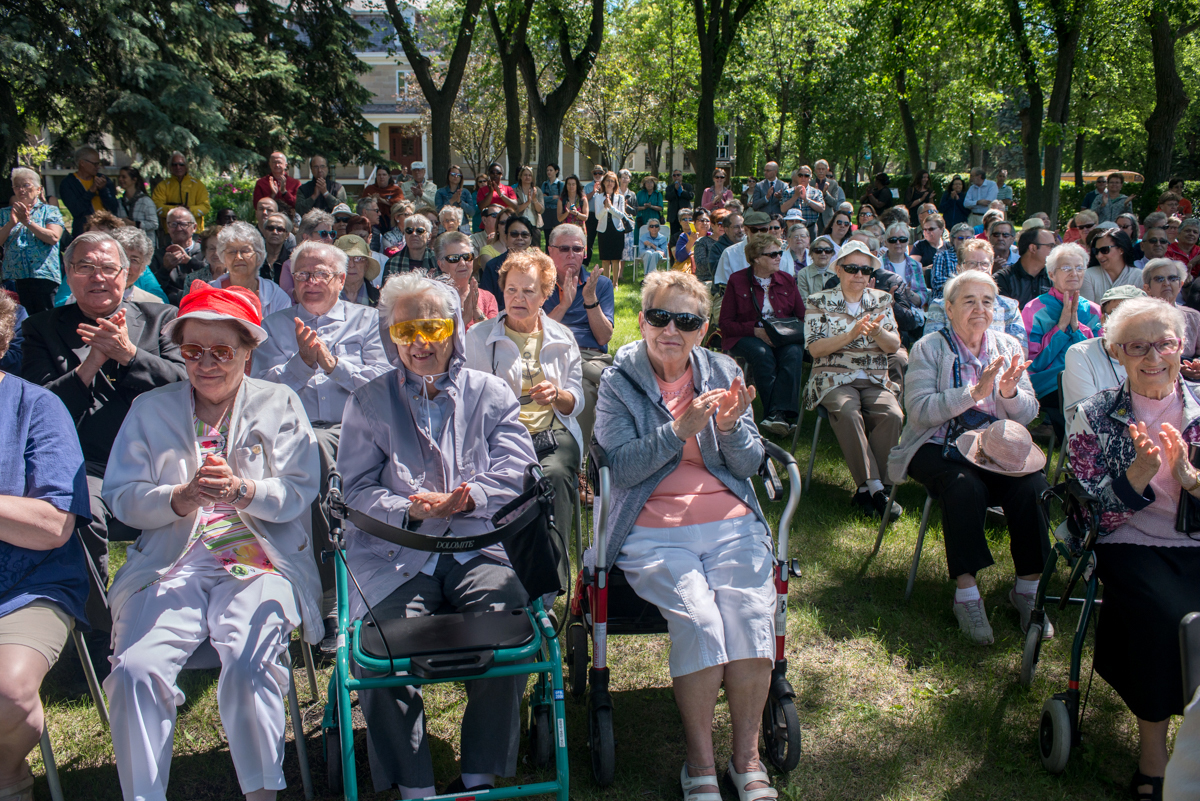
To view Blessing of Monument text and images, click HERE.
To read the Apostolic Nuncio, H.E. Mgr. Luigi Bonazzi's speech, click HERE
To read Archbishop Albert LeGatt's speech, click HERE
To view letter from Dan Vandal, MP, click HERE
To view photos of the monument construction, June 20th event and unveiling, visit the Photo Gallery found under News & Media
About the Artist
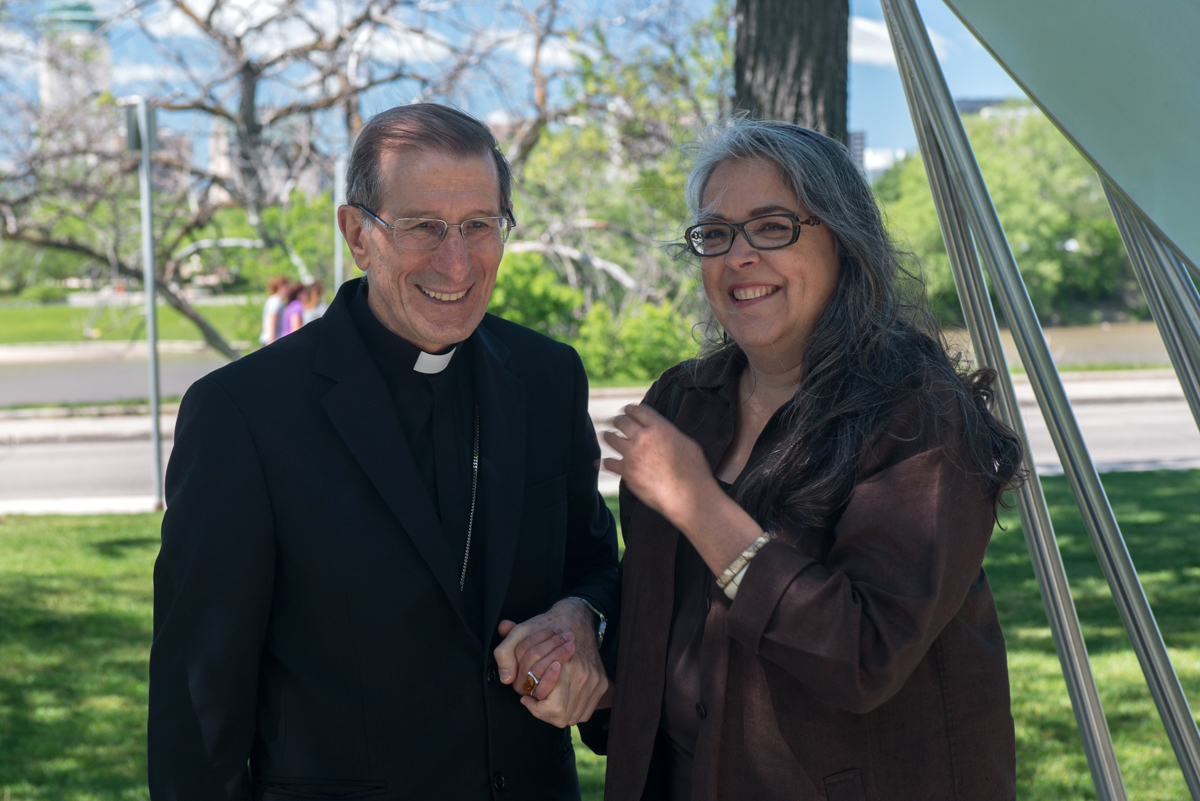 Madeleine Vrignon has a bachelor of fine arts from the University of Manitoba (1979). She works above all in sculptural art. Many of her art pieces are custom-made orders. She has notably created bronze and granite monuments for the Royal Canadian Mounted Police (Vancouver and Winnipeg), a bronze bust of Dafoe for the Winnipeg Real Estate Board, a large bronze sculpture for the Pionniers de l’entrepreneuriat (CDEM), a coat of arms in bronze and granite for the Manitoba Legislative Building, as well as a variety of art pieces the Cercle Molière, the Franco-manitoban Cultural Centre, Francofonds and private collectors. She works in the fields of conceptual design for signs, was an engraver for Brunet Monuments, and taught art at Collège Béliveau. Since 1984, Madeleine has illustrated numerous books for children and adults.
Madeleine Vrignon has a bachelor of fine arts from the University of Manitoba (1979). She works above all in sculptural art. Many of her art pieces are custom-made orders. She has notably created bronze and granite monuments for the Royal Canadian Mounted Police (Vancouver and Winnipeg), a bronze bust of Dafoe for the Winnipeg Real Estate Board, a large bronze sculpture for the Pionniers de l’entrepreneuriat (CDEM), a coat of arms in bronze and granite for the Manitoba Legislative Building, as well as a variety of art pieces the Cercle Molière, the Franco-manitoban Cultural Centre, Francofonds and private collectors. She works in the fields of conceptual design for signs, was an engraver for Brunet Monuments, and taught art at Collège Béliveau. Since 1984, Madeleine has illustrated numerous books for children and adults.
The Catholic Health Association of Manitoba is very pleased to have selected Madeleine as the artist who will be creating the commemorative monument to render homage to all of Manitoba's Catholic Consecrated Women.
Artist's Vision for Monument
Given the scope of the work done by all of the congregations of women religious, I felt compelled to create a metaphor that would reflect this work while giving the piece a specifically Manitoba “feel.”
To reflect that reality, I chose to depict the weaving of a ceinture fléchée (arrowhead sash), which has come to symbolize the Métis people.
The metaphor also highlights women’s work that requires countless hours and a great deal of patience, not unlike the qualities embodied by the nuns.
The stainless steel threads suggest that the two nuns are weaving the fabric of society through their service to our communities via hospitals, schools, orphanages, and more.
The sculptures are placed to one side of the structure, to showcase their contribution. On the other side, there is still work to be done by laypeople or others who feel called by the Spirit.
Some see welcoming arms in the piece’s overarching shape, as well as the coif or headdress of a nun’s habit. Seen from the side, the monument also suggests the bow of the canoe (harkening back to the first arrivals)
The steel strands anchoring the structure show that the work done by the congregations of women religious is firmly rooted here in Manitoba.
The knot at the apex of the metal structure also has significance. I wanted it to evoke a kind of bugle, to symbolize the call of the Spirit answered by the nuns.
The sculpture of the kneeling nun with raised arms gives thanks and recognition to the Spirit through her gesture. She is the first Grey Nun to arrive here bearing that mission; her traditional habit suggests this historical element.
The standing nun with the outstretched hands represents a postulant who has heeded the call and is here to serve. Her clothing reflects the more relaxed post-Vatican II attitude.








